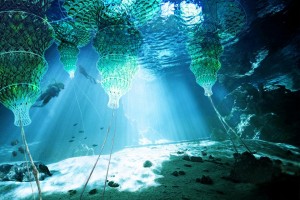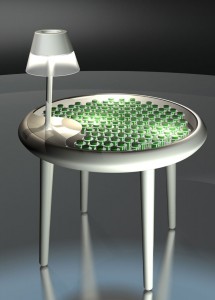Amidst society’s hopes for a green future, the power of working with nature is still not sufficiently understood or exploited. Too many visions remain divorced from the end user. Claudia Pasquero and Marco Poletto, the architects and co-founders of London-based ecoLogicStudio, feel that ‘using and interacting with natural elements in a symbiotic way can become a game with ecological benefits.’ Recently they have focused on the potential of algae—micro-algae are used for energy, while macro-algae—like bio-radars or generative agents—is used for filtering water and making food.

 Follow
Follow